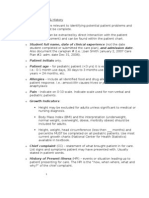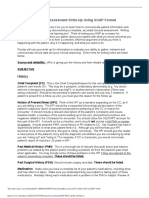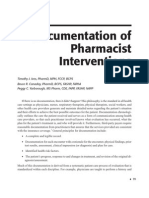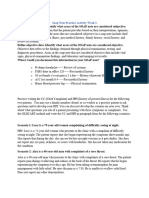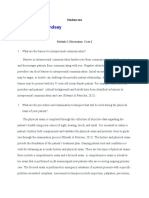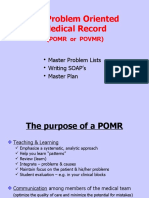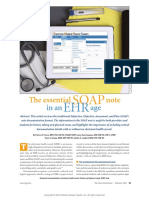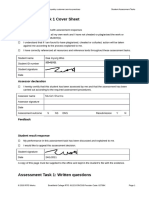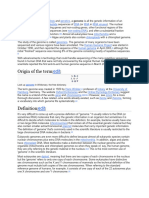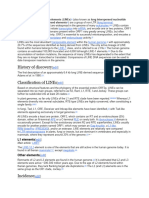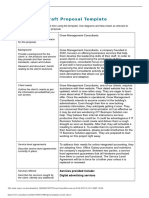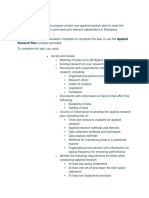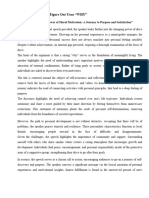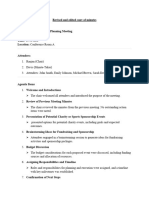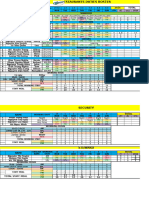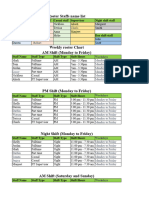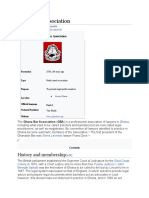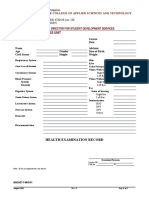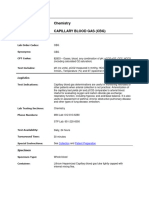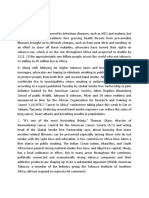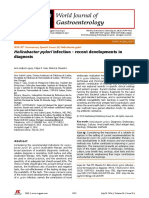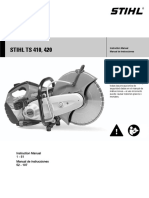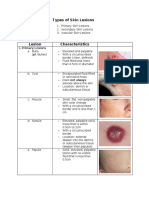Introduction
The Subjective, Objective, Assessment and Plan (SOAP) is an acronym representing a widely-used method of
documentation in veterinary and human medicine. The SOAP is a way for healthcare workers to document their
thinking in a structured and organized way.[1][2][3]
The SOAP reminds clinicians of specific tasks while providing a framework for evaluating information. It also
provides a cognitive framework for clinical reasoning to help avoid biases especially common in new doctors.
The SOAP helps guide students and veterinarians to use their clinical reasoning to assess, diagnose, and treat a
patient based on the information provided by the history, PE, and diagnostic tests. SOAPs are an essential piece
of information about the health status of the patient as well as a communication document between
veterinarians. The structure of this document serves as a cognitive aid and a potential index to retrieve
information for learning from the record.[4][5][6]
As you progress through your career, and learn certain illness scripts, your SOAPs may become more brief. While
you are a student, and have sufficient time to work on building those illness scripts, your SOAPs should be as
complete and in-depth as possible, to aid in your learning.
Structure
The 4 headings of a SOAP are Subjective, Objective, Assessment and Plan. Each heading is described below.
Subjective
This is the first heading of the SOAP. Documentation under this heading comes from the “subjective”
experiences with the patient (ie. how do they appear to feel to you that morning). In the inpatient setting,
interim information is included here. This section provides context for the Assessment and Plan.
Chief Complaint (CC)
The CC or presenting problem for which the pet is being evaluated. This can be a symptom, condition, previous
diagnosis or another short statement that describes why the pet is hospitalized. The CC is similar to the title of a
paper, allowing the reader to get a sense of what the rest of the document will entail.
Examples: chronic large bowel diarrhea, decreased appetite, shortness of breath
In your history taking, a pet’s owner may have multiple CC’s, and their first complaint may not be the most
significant one. Thus, you should encourage cleints to state all of their pet’s problems, while paying attention to
detail to discover the most compelling problem(s). Identifying the main problem(s) must occur to perform
effective and efficient diagnosis.
History of Present Illness (HPI)
The HPI begins with a simple one line opening statement including the patient's age, neuter status and reason
for the visit.
Example: 5 year old MC domestic shorthaired cat presenting for straining to urinate for 24 hours
This is the section where you can elaborate on their chief complaint. An acronym often used to organize the HPI
is termed “OLDCATS”:
Onset: When did the CC begin?
Location: Where is the CC located?
� Duration: How long has the CC been going on for?
Characterization: How does the client describe the CC?
Alleviating and Aggravating factors: What makes the CC better? Worse?
Temporal factor: Is the CC worse (or better) at a certain time of the day?
Severity: Using a scale of 1 to 10, 1 being the least, 10 being the worst, how does the client rate the CC?
It is important for you to focus on the quality and clarity of your patient's notes, rather than include excessive
detail.
History
Medical history: Pertinent current or past medical conditions
General health history: UTD on vaccines? On FTHW prevention?
Travel history: Where does the pet travel?
Adoption History: Where is the pet from?
Current Medications, Allergies
Current medications and allergies may be listed under the Subjective or Objective sections. However, it is
important that with any medication documented, to include the medication name, dose, route, and how often.
Example: Gabapentin 600 mg orally every 4 to 6 hours for 5 days
Objective
This section documents the objective data from the patient encounter. This includes:
Vital signs
Physical exam findings
Laboratory data
Imaging results
Other diagnostic data
Recognition and review of the documentation of other clinicians (ie. Neurology consult, Cardiology BP)
Assessment
This section documents the synthesis of “subjective” and “objective” evidence to arrive at a list of possible
diagnoses. This is the assessment of the patient’s status through analysis of the problem, possible interaction of
the problems, and changes in the status of the problems. Elements include the following.
Problems
List the problems in order of importance. A problem is often defined as “high-yield” versus “low-yield.” High-
yield problems have either narrow lists of differential diagnoses (ie. weight loss with a ravenous appetite in a
middle-aged cat) or are life-threatening (ie. severe bradycardia). Low-yield problems are often reported by
�owners, are non-specific, usually not life-threatening, or have very long differential lists (ie. anorexia, lethargy,
inappetence, mildly decreased potassium).
Differential Diagnoses
This is a list of the different possible diagnoses, from most to least likely, and the thought process behind this
list. This is where the decision-making process is explained in depth. Included should be the possibility of other
diagnoses that may harm the patient, but are less likely.
Example: Problem 1, Differential Diagnoses, Discussion (underline or italicize differential diagnoses you
feel are most likely or that must be ruled out for patient safety). Repeat for additional high-yield
problems
Plan
This section details the need for additional testing or treatment to address the patient's problems and is based
off your prioritized differential diagnoses from your assessment. This section helps future clinicians understand
what needs to be done next and why the chosen tests were performed. For each problem:
State which testing is needed and the rationale for choosing each test to resolve diagnostic ambiguities;
ideally what the next step would be if positive or negative (Diagnostic Plan)
Therapy needed (Treatment Plan)
At the end of your plan, look at the tests you have chosen for each problem, and develop a comprehensive
communication plan that you’ll use to speak with the owner. This may involve the discussion of pros/cons of
certain diagnostic or therapeutic options you detailed in your plan, or it may be a quick update depending on
the status of the patient.
A comprehensive SOAP has to take into account all subjective and objective information, and accurately assess it
to create the patient-specific assessment and plan.
Adapted from:
NCBI Bookshelf. A service of the National Library of Medicine, National Institutes of Health.
SOAP Notes
Authors
Vivek Podder1; Valerie Lew2; Sassan Ghassemzadeh3.
References
1. Gogineni H, Aranda JP, Garavalia LS. Designing professional program instruction to align with students' cognitive
processing. Curr Pharm Teach Learn. 2019 Feb;11(2):160-165. [PubMed: 30733012]
2. Andrus MR, McDonough SLK, Kelley KW, Stamm PL, McCoy EK, Lisenby KM, Whitley HP, Slater N, Carroll DG, Hester EK,
Helmer AM, Jackson CW, Byrd DC. Development and Validation of a Rubric to Evaluate Diabetes SOAP Note Writing in
APPE. Am J Pharm Educ. 2018 Nov;82(9):6725. [PMC free article: PMC6291674] [PubMed: 30559501]
3. Lisenby KM, Andrus MR, Jackson CW, Stevenson TL, Fan S, Gaillard P, Carroll DG. Ambulatory care preceptors'
perceptions on SOAP note writing in advanced pharmacy practice experiences (APPEs). Curr Pharm Teach Learn. 2018
Dec;10(12):1574-1578. [PubMed: 30527822]
4. Sando KR, Skoy E, Bradley C, Frenzel J, Kirwin J, Urteaga E. Assessment of SOAP note evaluation tools in colleges and
schools of pharmacy. Curr Pharm Teach Learn. 2017 Jul;9(4):576-584. [PubMed: 29233430]
�5. Belden JL, Koopman RJ, Patil SJ, Lowrance NJ, Petroski GF, Smith JB. Dynamic Electronic Health Record Note Prototype:
Seeing More by Showing Less. J Am Board Fam Med. 2017 Nov-Dec;30(6):691-700. [PubMed: 29180544]
6. Santiago LM, Neto I. SOAP Methodology in General Practice/Family Medicine Teaching in Practical Context. Acta Med
Port. 2016 Dec 30;29(12):854-859. [PubMed: 28425889]










